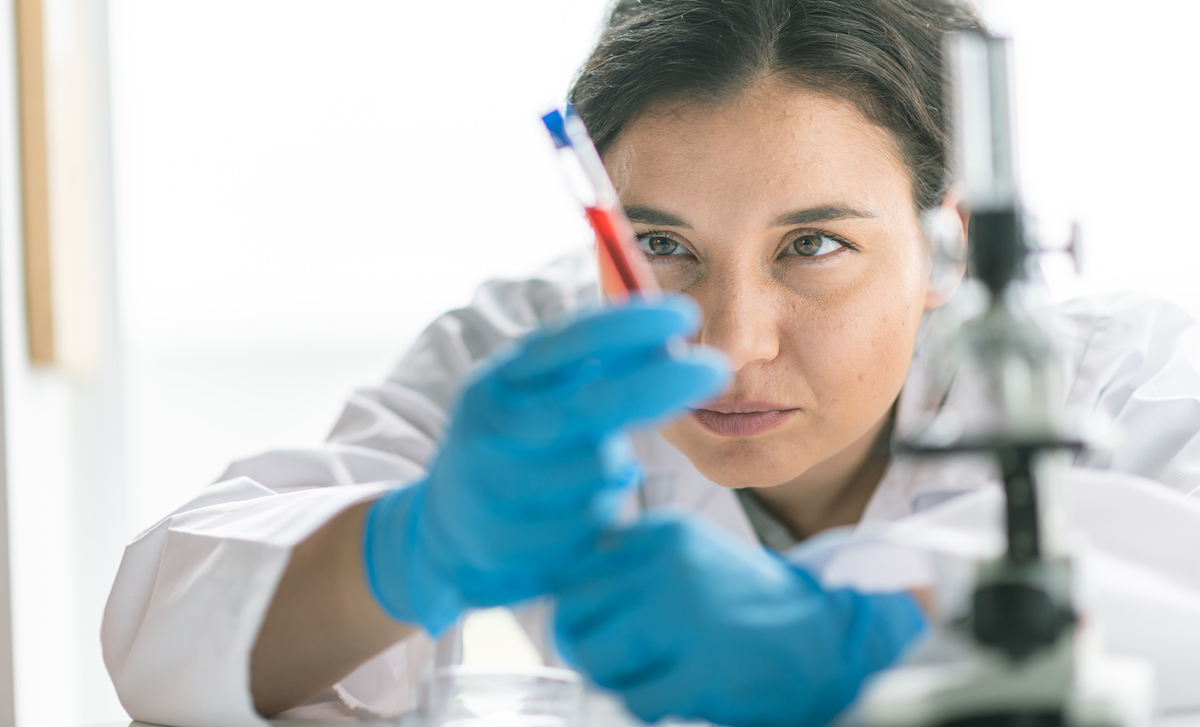About eight years ago, pathologist Meredith Halks-Miller, MD, made an unexpected discovery at genetic screening company Illumina. She was screening maternal blood for fetal genetic abnormalities, and in four cases found abnormal maternal DNA.
Not knowing what this abnormal DNA really signified, Illumina notified the physicians of the four pregnant women, all of whom were subsequently found to have early asymptomatic cancers. (Illumina, a leading manufacturer of DNA sequencing technology, founded Grail, a company focused on understanding cancer DNA.)
Over the past 10-15 years, scientists have focused on understanding and characterizing tumor genomics, the study of cancer-cell DNA sequencing and mutation analysis, based on a biopsy from the cancer itself. This field has resulted in a new era of personalized oncology care. Each patient’s tumor is unique, and certain mutations — called “driver” mutations — may actually be the cause of the cancer formation.
Some of these mutations are targetable by selected molecular therapies developed specifically to disable cancer cells by focusing on that particular mutation. A challenge of the science is to deal with huge volumes of data generated by DNA sequencing (Big Data). This has resulted in a new and exciting area of Cancer Informatics — specific therapies that can produce partial or complete regression of selected cancers, even those that are advanced and otherwise resistant to conventional cancer therapies. The field of “precision oncology” was born as result.
The National Institutes of Health’s Cancer Genome Atlas (TCGA) was perhaps the most ambitious and comprehensive effort to characterize cancers of different types and develop an atlas of the most common mutations and molecular findings available to all scientists for rapid dissemination and discovery. Hartford Hospital was an early participant in TCGA, as well as in other early efforts at genomic assessment, including the Total Cancer Care (TCC) genomics project at Moffitt Cancer Center in Tampa, Fla.
Thousands of Connecticut cancer patients generously consented to have some of their tissue go through DNA sequencing through these collaborations so that the oncology community could learn more about cancer, what might cause it and how best to treat it.
In recent years, scientists became aware that cancers also release DNA fragments into the bloodstream of the host patient, so-called circulating or cell-free DNA (cDNA). As the technology improved to study tissue and blood for abnormal DNA, a specific goal became the development of a test that could monitor for response to therapy. For example, a tumor that had its DNA characterized during its removal could be treated with cancer therapies, and a blood test could determine how much, if any, cDNA remained in the blood.
If no cDNA was found, the cancer perhaps was completely gone as well. This, then, could not only monitor response to treatment, but periodic tests could also be used to search for the earliest signs of recurrence. Grail became one of the expert companies, amongst others, at studying cDNA for this purpose.
The cDNA patterns for various cancers were therefore characterized, raising the possibility that this blood test could be used in patients without cancer, to determine if cancer was present as a screening test. Many investigators are studying this potential breakthrough in cancer screening. Grail has been studying this the past several years.
The Hartford HealthCare Cancer Institute has been collaborating with Grail on some of these studies. For example, one study has looked at women undergoing screening mammography, checking a blood sample for cDNA to correlate with mammographic findings as a way of potentially diagnosing breast cancer earlier or with higher sensitivity.
Grail’s Pathfinder trial enrolled 6,662 patients over 50 years old with varying risk factors but no clinical evidence of cancer. Cancer cDNA was detected in 92 of these patients (1.4 percent). Diagnostic evaluation in 65 of these patients revealed cancer in 29 patients, whereas 36 were felt to represent false positive results.
The positive predictive value (PPV), the likelihood of getting a positive cancer result from the abnormal cDNA, was therefore 44.6 percent. There were 13 cancer types diagnosed, many of which have no recommended screening tests available. Of the participants with a new cancer diagnosis, 57 percent had stage I-III cancer and 39 percent had stage I-II cancer.
Proponents of these findings say that the trial demonstrated early cancer diagnosis in many patients at a potentially curable stage. Critics of the study say that the false positive rate is high, higher than the true positive rate, and that the test may cause more harm than good.
As a result of these studies, Grail has developed the Galleri blood test now being marketed nationally to detect 50 or more cancers looking for cDNA in a blood sample. This test is not yet approved by the FDA. The cost of the test is $949 and may not be covered by insurance.
There has been a fair amount of excitement about the prospect of a blood test detecting cancer early, but the technology is clearly at the beginning of this journey, and dramatically more will be learned as many investigators explore cDNA in the upcoming months and years.
In the meantime, other genetic approaches to early diagnosis are also being investigated. Researchers in a European collaborative have discovered that epigenetic changes in a routine cervical PAP smear might identify early evidence of cervical, uterine, ovarian or breast cancer. Epigenetics refers to changes in gene activity and/or expression not related to DNA mutations and generally related to an environmental or external factor. This novel approach was successful in diagnosing several cancers early, and large-scale clinical trials are currently being contemplated to fully evaluate this technology.
It is likely that we will see many new novel approaches to cancer screening in the upcoming years as our understanding of cancer genetics continues to mature. We thank the brilliant researchers who are working on this important research, and the thousands of patients who have volunteered to participate in these important studies.
This may ultimately and totally change the landscape of cancer screening and result in substantial improvements in early diagnosis, thus improving cancer-related mortality.



